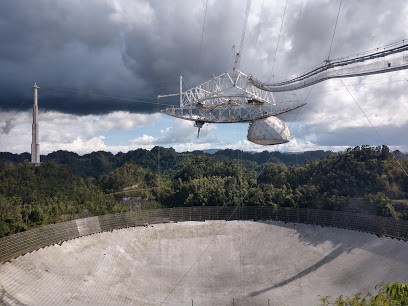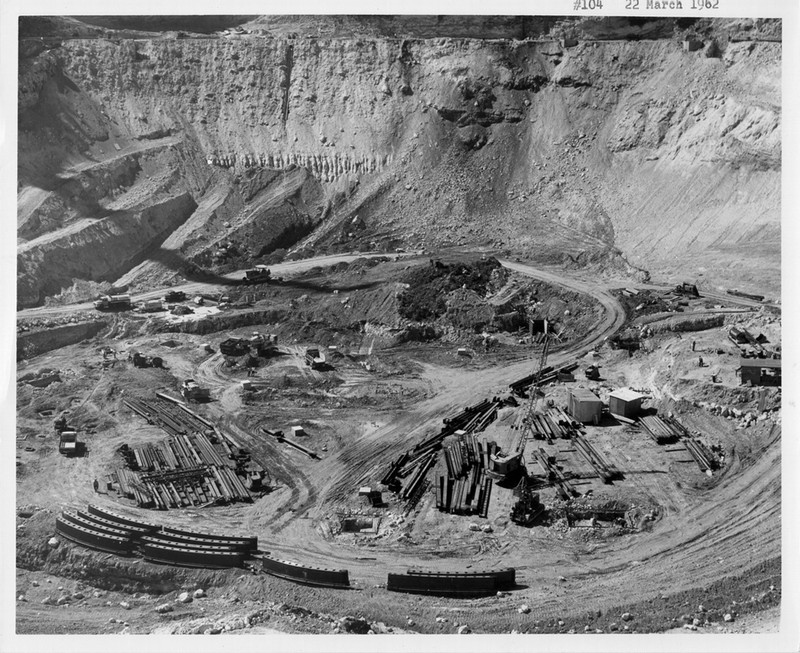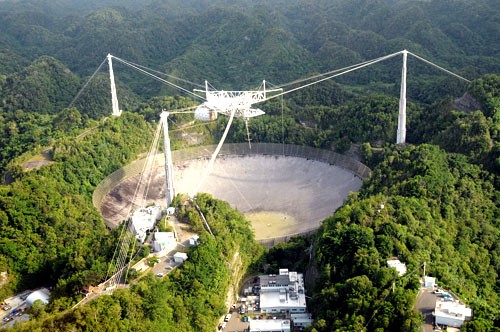Arecibo Observatory
Introduction
Text-to-speech Audio
Images
The main dish of the observatory is the length of around 30 football fields.

The start of the observatories construction.

Birds eye view of the observatories dish.

Backstory and Context
Text-to-speech Audio
In 1963, the Arecibo Observatory was built by the U.S Air force. In the early 1970s, its telescope was upgraded.In 1992 line feeds were replaced with Gregorian reflectors.The dish itself is one of the largest in the world.The Arecibo Observatory was built in Puerto Rico as the location chosen was closer to the equator line and the location had many sinkholes making it easier to construct equipment.
The observatory has had many upgrades over the years, the first being when it became part of the NSF's National Astronomy and Ionosphere Centers in the early 1970s. This was when the wire mesh surface was replaced by aluminum panels helping the telescope operate at higher frequencies than it ever could. The second upgrade that took five years to finish ( from 1992 to 1997) replaced the line feeds causing the telescope to be able to operate over its original frequency range. The funding for the second large upgrade was done by Cornell, the NSF and NASA.
The research done at the observatory has led to the creation of highly detailed radar maps for the surfaces of both Venus and Mercury. While also discovering the fact that Mercury itself rotated every 59 days not the 88 it was originally believed to.Through the work done by Rusell Hulse and Joseph H. Taylor Jr. the first binary pulsar was discovered through the use of the observatory leading to the awarding of the Nobel prize in physics. Recently UCF, Universidad Metropolitana in San Juan and Yang Enterprises, Inc partnered to increase the telescopes capabilities. UCFs role in the partnership is focused on outreach through education to create more opportunities to study space. While Yang Enterprises is helping to modernize the observatories operations.
There are various activities visitors are allowed to partake in at the observatory such as tours. During the time at the observatory one can watch a twenty minute film on the observatory.By paying an admission fee, twelve dollars for adults and eight for children, visitors can partake in many different activities in the Arecibo Observatory. Some of these include tours and films with information on the observatory.
Sources
Howell, Elizabeth. “Arecibo Observatory: Watching for Asteroids, Waiting for E.T.” Space.com, Space, 17 Aug. 2018, www.space.com/20984-arecibo-observatory.html.
This is a secondary source article detailing information on the observatory. It is stated that the observatory is famously known for a search for extraterrestrial intelligence in the year 1974. This will help explain some of the importance and relevance of the observatory in history. It also goes into some detail over the creation of the telescope and how hurricane Maria affected it. It also states what the observatory is being used for now. This being scanning for asteroids and other objects that can deal harm to Earth.
June 19, 1997. “Some Facts (and a Little History) about Arecibo.” Cornell Chronicle, 19 June 1997, news.cornell.edu/stories/1997/06/some-facts-and-little-history-about-arecibo.
This article contains information on the construction of the observatory. It also contains various details on the hardware of the telescope and the upgrades that where done to it over time.
Puerto Rico Day Trips Travel Guide, www.puertoricodaytrips.com/arecibo-observatory/.
The Editors of Encyclopaedia Britannica. “Arecibo Observatory.” Encyclopædia Britannica, Encyclopædia Britannica, Inc., 18 Sept. 2019, www.britannica.com/topic/Arecibo-Observatory.
“Welcome to The Arecibo Observatory: The Arecibo Observatory.” Welcome to The Arecibo Observatory | The Arecibo Observatory, www.naic.edu/ao/.
This is a secondary source explaining some of the basic information on the observatory. This being a website for people interested in visiting or learning some facts on the observatory. This source helps explain the creation of the observatory. It says some information on how to visit and what to do when you visit. On the historical side it contains how the idea of the observatory came to be and who created it and why.
Google Maps
https://www.naic.edu/ao/content/march-22-1962-sinkhole
https://skyandtelescope.org/astronomy-news/arecibo-observatory-faces-uncertain-future/
